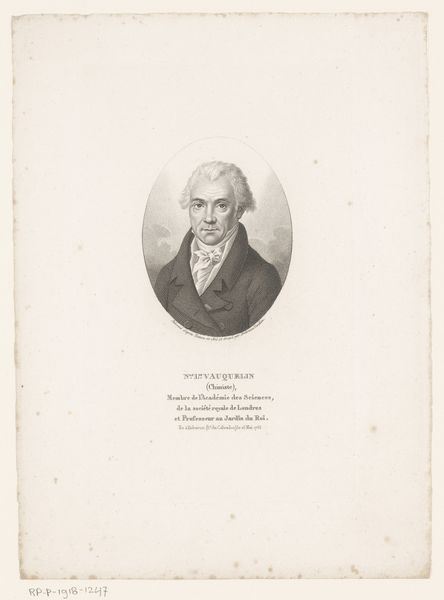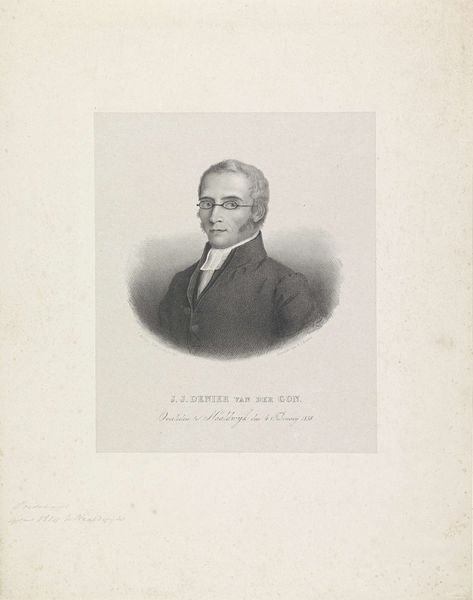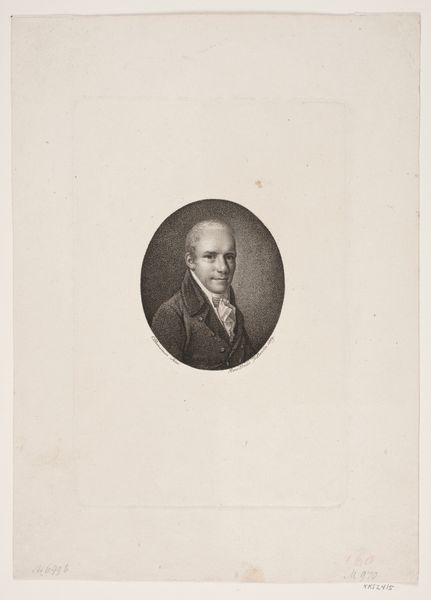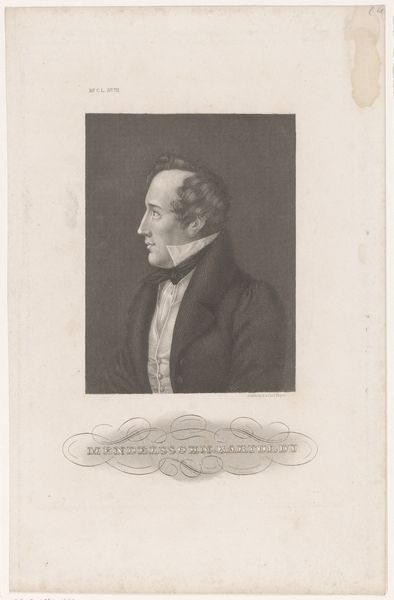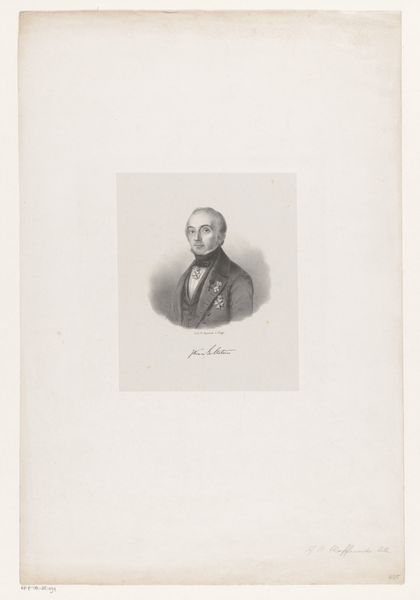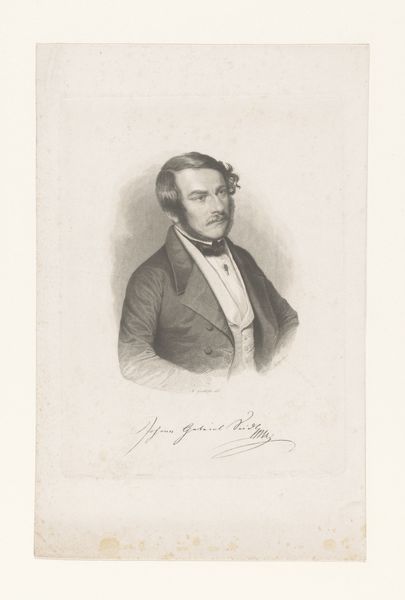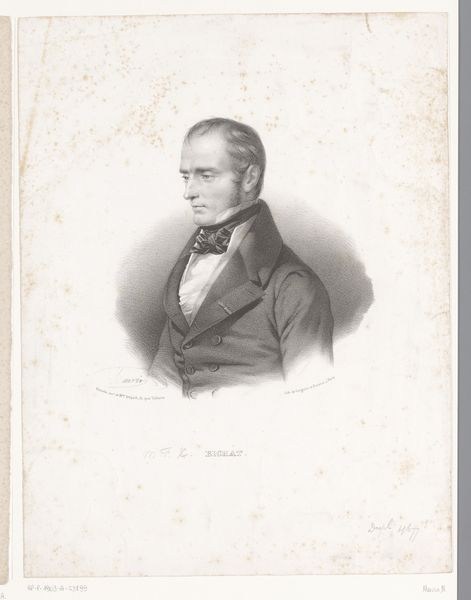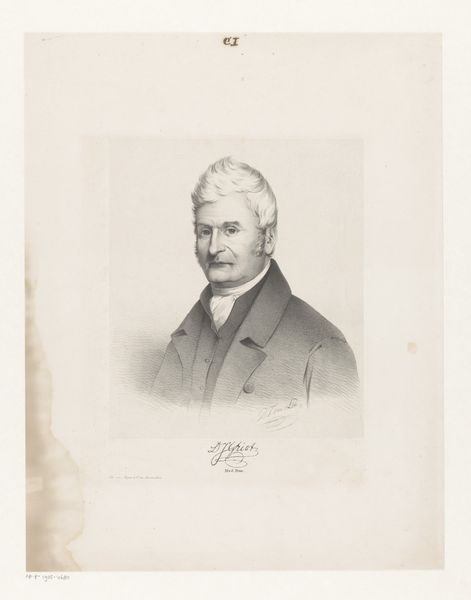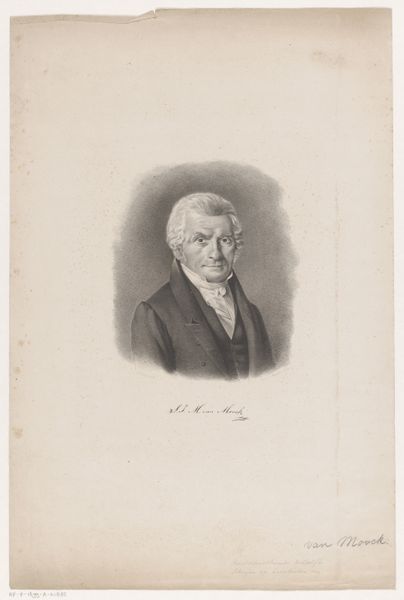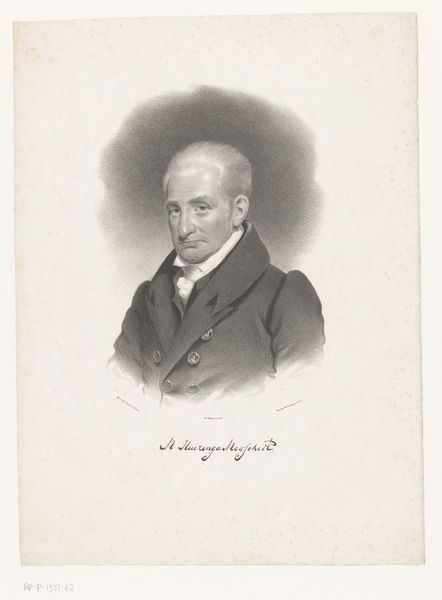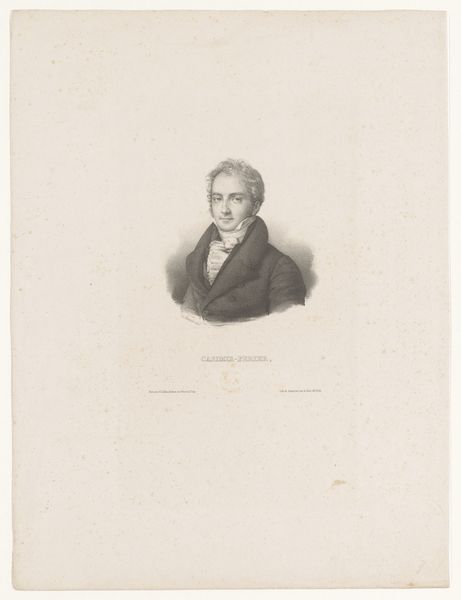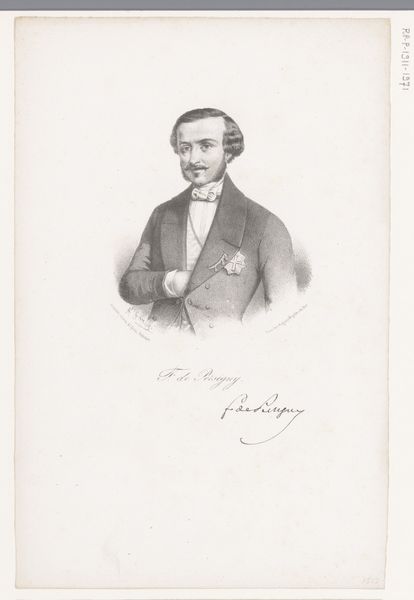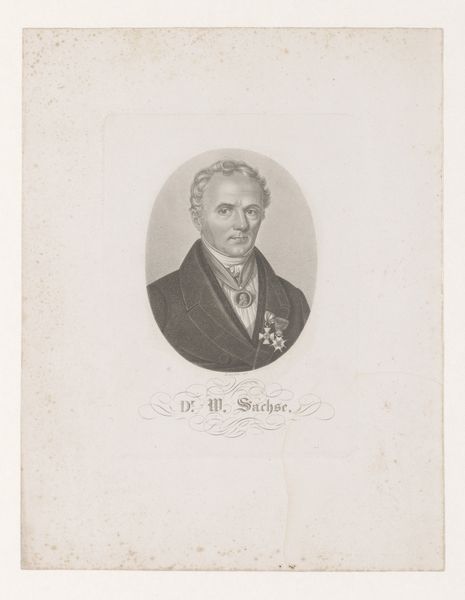
drawing, lithograph, print, paper, pencil
#
drawing
#
neoclacissism
#
16_19th-century
#
lithograph
# print
#
pencil sketch
#
paper
#
pencil drawing
#
pencil
Dimensions: height 317 mm, width 224 mm
Copyright: Rijks Museum: Open Domain
Curator: Standing before us is a lithograph from 1838, titled "Portret van Heinrich Eberhard Gottlob Paulus" by Antoine Maurin, currently housed at the Rijksmuseum. It presents a distinguished gentleman, likely a figure of considerable stature. Editor: He looks…serious. Almost intimidating. The sharp lines and intense gaze… Feels very… determined. Like he's staring right through me, you know? All in stark pencil, a bit unsettling. Curator: Indeed. Paulus, a prominent theologian, lived through an era of significant intellectual and social upheaval. Consider how the burgeoning print culture and lithography democratized portraiture, making likenesses of public figures accessible. Editor: So, it's not just a portrait, it's propaganda? Or not propaganda maybe…but… public image-making? This fellow certainly wanted to project an image of himself as wise and resolute, I guess. All perfectly neoclassical, not a hair out of place! Curator: Precisely. The neo-classical style further emphasizes order and reason. Notice the meticulous rendering and balanced composition, fitting the Enlightenment ideals that still held sway. It shows his standing and standing within certain intellectual and social circles. Editor: Well, if he was going for Enlightenment reason and order…he certainly succeeded in communicating his brand. But I do wonder if his family ever saw the glint of something else, or this is all performance? A perfectly poised public display hiding away anything contradictory or even human! Curator: The fascinating question is, who are we meant to perceive the artwork: Paulus or his position? Art functions so efficiently as social messaging, sometimes almost subliminally enforcing how we view the sitter or the topic, from their clothes to overall comportment, or even the framing itself. Editor: It leaves me wondering about all that isn’t captured in that resolute stare. What stories did he not share with his portrait painter or audiences? Ah well, the man's been gone a while... Now the portrait's left holding all the history and weight. Curator: It is a stark representation, and considering that art exists to remind of what time attempts to erase, here stands an imposing image to contemplate and remember. Editor: A chilling thought to end our viewing: to leave a reminder long after we go!
Comments
No comments
Be the first to comment and join the conversation on the ultimate creative platform.

